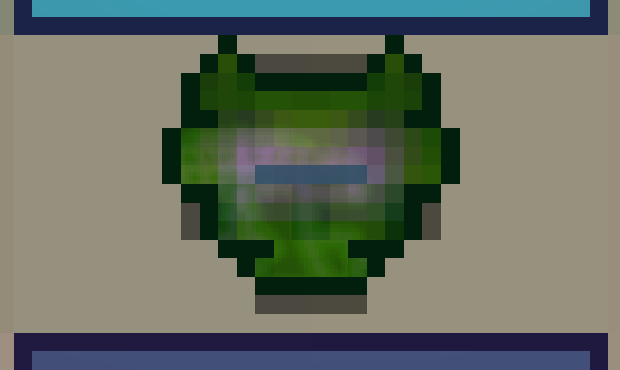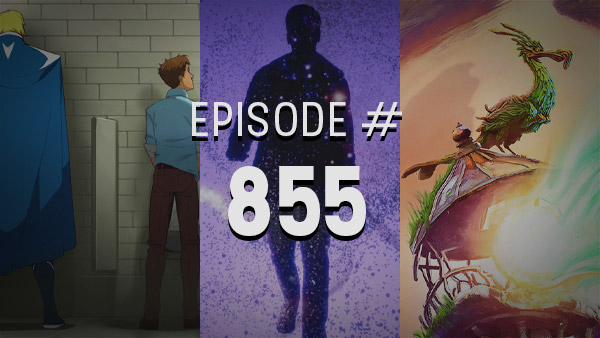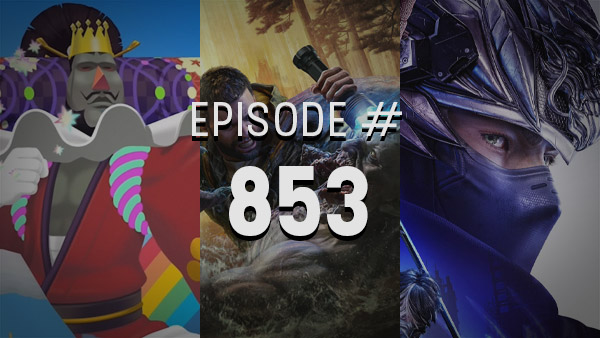Your login information returned multiple users. Please select the user you would like to log in as and re-type in your password.


Jason Rohrer’s Inside a Star-filled Sky is confounding. Its premise is laid out on the game’s website, which is a very loose quote from everyone’s favorite justice, Antonin Scalia. The quote:
In our favored version, His Holiness the Dalai Lama and Stephen Hawking are seated next to each other at the Stockholm banquet after receiving their Nobel Prizes for Peace and Physics, respectively. Between courses one and two, the discussion naturally turns to cosmology. Before Hawking is even three sentences into his creation theory, the Dalai Lama interrupts him. "Mr. Hawking, I already read your book. Many mistakes." Shocked, Hawking presses for an example. The Lama asserts that the universe is not "just floating there," but is instead supported on the back of a great tiger. Smiling, Hawking asks what supports the tiger. The Lama asserts that it stands upon an elephant. Hawking then asks what supports the elephant. "A giant turtle," the Lama replies. When asked, finally, what supports the turtle, His Holiness is briefly taken aback, but quickly replies, "Ah, after that it is turtles all the way down."
Inside a Star-filled Sky is born out of this idea: in the beginning there is a player controlled creature in a level that is, when advanced beyond, revealed to be another creature. When the player hits the exit of a level, the pixels blur, the top down perspective zooms out, and the level literally becomes the next creature that the player controls. If all health is lost, the player drops back down a level. This is all achieved with procedural generation and the game is different every time it starts up. To place this game in a genre, it is a shooter: things fire bullets, bullets are shoot back at them and there are powers ups that make shooting better.
The systems at play here are so incredibly dense in a spatial sense that frequently one often can’t comprehend it—one literally cannot keep track of where they are in this space. It is surprising that the game still be intelligible.
It is so dense because of the ability to “enter” all the things on a level, thus entering another level “below” the current level, like branching off into another plane. Power ups can be entered, where collecting similar types of power ups increase the strength of it. Enemies can be entered to change its power up load out and even its various AI patterns. Yourself can be entered where power ups are collected to change the self that was just entered, rather than the next self. The thing is, each one of these can be layered. You can enter yourself, enter an enemy within yourself, enter a power up that is within the enemy that is within yourself, and even enter yourself that is within an enemy that is within the power up that is within your other self.
It is easy to go on and on about how Inside a Star-filled Sky is a conceptually brilliant game, and how so many unique situations can emerge from it. But after spending a whole lot of time with it, some other, less than stellar things did emerge as well.
Just being curious and wanting to explore how far these systems go without exploding, I decided to see just how far the game will scale. When you enter power ups, there is difficultly modifier that increases, if you enter a power up within a power up, this increase will be even greater. Eventually reaching level -234 by repeatedly entering things, I reached a difficulty modifier of 2,147,463,404 (Yes, that is over two billion). It gets very difficult but, really, there isn’t much point to making the game more difficult. The power ups didn’t scale up nearly proportionally. In my trip over 200 levels of higher difficulty, less than 10 of those contained power ups with values greater than the tens. To be fair, one level did seem to have power ups in the high hundreds (possibly thousands, I died far too quickly to check it out), I didn’t meticulously check every corner and if playing strategically, one doesn't need to go this deep. Still, if increased risk doesn’t generally bring far better rewards, the difficultly only acts as a deterrent to explore the game’s systems, which is a real shame considering how immense they are. Instead of encouraging a player to enter power ups within power ups within power ups, it encourages the tedious act of “re-rolling” the level. Meaning, repeatedly entering and exiting a power up until the game generates the level with power ups that are wanted.
Further on the how the power ups are designed, the weakest power up degrades each level you go up. It gives a good reason to continue to mix it up while still allowing the player to save up the powerful ones in the other 2 slots (a total of 3 power up slots). Where this can be troublesome is when a key power up is the weakest and that is the one you are actively trying to make stronger. To get a stronger one you must enter power ups where the difficulty is increased and the chance of dying is greater. As of the version 15, when you die, you lose the weakest power up you have and it is replaced with health. This can be life saving if your weakest was health, or it can completely screw you over if it was something as important as range.
Besides that, Inside a Star-filled Sky has been generally improving with each update (he has updated it once since I wrote this, to v16) and hopefully Rohrer continues to refine it. What he has created is indeed special, despite the tedium that can emerge.
In a way, Inside a Star-filled Sky satisfies both audiences of players and critics: the ones who want idea-first, intellectual stimulating design through content and the ones who enjoy the instinctive feelings that game systems can contain. Rohrer has shown his range in this “spectrum” in the past, and Inside a Star-filled Sky is a very mature, middle-ish point that balances these two ideas, never entirely letting one or the other drive the game alone.
[Inside a Star-filled Sky is available for Windows, Mac and Linux operating systems on its website for 12 dollars.]




Comments
14 years, 9 months ago
A power up... within a powerup
14 years, 9 months ago
School, I love your articles. You always introduce me into a new, (often PC games) obscure games that I cannot get enough of. This, of course, is no different! :> I don't recall though, have you made a post on "One Chance"? I don't recall.
14 years, 9 months ago
Where was this on my Question of the Day about innovative exploration?
14 years, 9 months ago
Seems pretty cool, bullet hells aren't really my thing though.
14 years, 8 months ago
Great post. I've watched brief gameplay from The Cynical Brit, and his narrative aside, the concept and art are (I'm not even trying to be perjorative) interesting. Definitely seems like something to play on a day when you're ready to be recalibrate your sense of rhythm over and over again, so I'll file it away for a week of general abandon and disorientation this summer :D